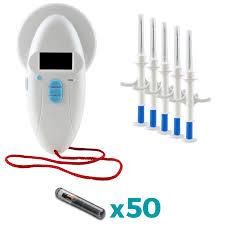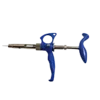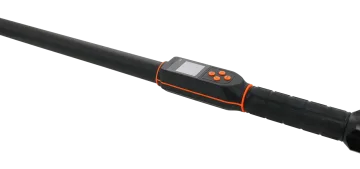No products in the cart.
Return To ShopHow to Choose a Waterproof / Rugged Tag Reader for Aquatic / Outdoor Use
Right at the start, if your tag reader fails when a storm hits or misses detections underwater, all the effort of tagging becomes wasted. Outdoor deployments demand more than just “it works indoors” gear. You need a tag reader built to survive water, dust, sun, vibration and remote use. Let’s dive into how to pick the right one.
Understand the Environment You’re Deploying In
Begin by asking: Where will the tag reading device live? On a riverbank? Submerged in a fishway? On a construction site in full sun and wind? Knowing the environment determines almost every specification.
Waterproofing & Ingress Protection
Look at the IP (Ingress Protection) rating of the reader.
- IP65 means dust-tight and protected against water jets, good for rainy outdoor use.
- IP67 means protected against immersion up to 1 m for 30 minutes, which is required for aquatic installations.
- Higher ratings (IP68/IP69K) are even more robust in harsh conditions. For a reader in an estuary or subject to splashes, prioritize a high rating.
If your tag reader is to be used outdoors where flooding, spray or immersion is possible, make waterproofing a priority.
Temperature, Sun & Mechanical Stress
Outdoor tag reading units must tolerate wide temperature swings, UV exposure and shock/vibration. Check specs like:
- Operating temperature range (e.g., −40 °C to +70 °C)
- Housing material: UV-resistant plastic or stainless steel for coastal/high salinity zones
- Vibration/impact resistance (especially if mounted on machinery, boats or poles)
If you ignore these, you may find hours of success followed by unpredictable failure.
Which Features Matter for a Rugged Reader
Once you’ve defined the environment, the next step is choosing the reader itself with features tuned for outdoor durability.
Read Range & Frequency Compatibility
Even rugged devices fail if the range or frequency is wrong. Choose a tag reading device whose read distance matches your deployment. For example, aquatic monitoring often uses shorter-range, well-sealed systems. Outdoor asset tracking may require long-range reads. Also, match frequency: some tags work with low-frequency systems less affected by water, others use UHF long-range systems more suited to open air. Be sure your rugged tag reader supports the appropriate frequency.
Durable Housing & Sealed Components
A rugged reader should have:
- Solid housing material (e.g., polycarbonate or stainless steel)
- Sealed cable entries and connector covers to prevent water ingress
- Gasket seals, corrosion-resistant finishes, UV-stable coatings
These details may seem minor, but they make the difference between a tag reader that survives a season and one that fails after the first storm.
Mounting & Power Flexibility
Outdoors, you may need a tag reading equipment with flexible mounting and power options:
- Pole or wall mounting brackets rated for wind loads
- Ability to run from solar panels, deep-cycle batteries, or AC as required
- Power management features (auto shutdown when battery is low)
If your deployment is remote, the reader’s power and mounting setup can determine whether it stays online or goes dead.
Connectivity & Remote Monitoring
A rugged tag reader should support remote data access and monitoring. Look for:
- Interfaces like Bluetooth, wired Ethernet, cellular or WiFi
- Built-in logging if communications fail (so you don’t lose data)
- Indicators or even mobile alerts for fault conditions (battery low, antenna fault)
These features matter especially for outdoor or aquatic projects where physical access is costly.
Field-Test Features You Should Require
Here are features you should test or insist upon when choosing a waterproof or rugged tag reader:
- Ingress test: Can the reader survive heavy rain, direct spray, or even short submersion if required?
- Temperature cycling: Does it still work after exposure to full sun, then sudden cool-down (common outdoors)?
- Read stability in mess: When conditions are muddy, wet, or dusty, does it still detect tags reliably?
- Power fail behaviour: Does the reader shut down gracefully when on battery? Can it resume reading automatically?
- Connector durability: Are the power/data connectors sealed and rugged enough for repeated access or field servicing?
If the reader fails any of these, it’s likely to let you down in the real world.
Special Considerations for Aquatic Use
When your reader is used in or near water for fish, amphibians, or stream flows, there are extra issues:
- Choose a reader whose read zone can handle water conductivity and current flow. Some tag readers include auto-tuning features or special antennas to cope.
- For submerged or near-surface mounts, ensure the reader’s electronics are not subject to pressure or turbulence damage.
- Consider how you’ll retrieve data; will you need Bluetooth from a boat or cable access? The reader must support remote logging and data offload.
If the tag reading device isn’t specified for aquatic conditions, you may spend more time fixing gear than collecting data.
Making the Right Choice
Here’s a mini checklist to help you when comparing rugged tag readers:
- Define your environmental stressors (rain, salt, dust, vibration, immersion)
- Choose the IP rating and housing material to match those stressors
- Match read range and frequency to your tags and target objects
- Confirm power and connectivity options align with field logistics
- Verify remote monitoring, logging, and fault alerts are built-in
- Ensure mounting hardware is suitable for the site (poles, boats, ground mounts)
- Budget for maintenance and replacement potential; a rugged tag reading device upfront saves field time and repair costs down the line
How the Right Tag Reader Makes All the Difference
At the end of the day, your reader is the gateway to your data. If it fails, the tagging, the antennas, the field work, everything loses value. A well-chosen waterproof tag reader means fewer surprises, fewer missed detections, and a reliable stream of data. In harsh outdoor or aquatic sites, you simply cannot compromise on durability. So pick carefully, inspect thoroughly, and deploy confidently.
Concluding Remarks
Selecting a robust tag reader for outdoor or aquatic use isn’t just about buying a device; it’s about safeguarding your data and your project. If you’re ready to invest in equipment that won’t quit when the environment does, then turn to VodaIQ. With advanced waterproof, ruggedised tag reader solutions built for field resilience and long-term performance, we’ll help you track, collect and trust your data, no matter the weather.




Add comment